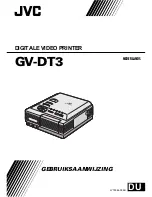
Authentication
295
Au
th
en
ticat
io
n
an
d
Acco
u
n
t Ad
min
ist
rat
io
n
13
z
System Administrator
z
Account Administrator
For details on each user role, refer to "User Role" (P.206).
Authorization Groups
The following four settings can be configured for each authorization group.
For details on authorization groups, refer to "Create Authorization Groups" (P.207).
Restrict Recipient Selection Method
Allows you to set whether or not to permit the group members to specify recipients
using the keyboard screen and buttons on the control panel, when [Restrict Recipient
Selection Method] is set to [Only From Address Book].
For details on the [Restrict Recipient Selection Method] setting, refer to "Restrict Recipient Selection
Method" (P.124).
Restrict User to Edit Address Book
Allows you to set whether or not to permit the group members to edit Address Book
when general users are prohibited editing Address Book.
For details on the [Restrict User to Edit Address Book] setting, refer to "Restrict User to Edit Address
Book" (P.124).
Allow user to disable active settings
Allows you to set whether to permit the group members to disable the Watermark feature
during their user session, when [Allow User to Disable Active Settings] in [Authentication/
Security Settings] is set to [Enable Active Settings].
For information on [Allow User to Disable Active Settings], refer to "Allow User to Disable Active
Settings" (P.211).
Types of Authentication
The following describes the types of authentication available on the machine.
Authentication is carried out using user information registered on the machine or user
information registered on a remote accounting server.
The following two different authentication methods are offered according to the
registration condition of user information.
Local machine authentication (Login to Local Accounts)
Local machine authentication uses the user information registered on the machine to
manage authentication.
The print from a computer can be received on the machine after being authenticated
by cross-checking the authentication information pre-configured on a client's driver with
that registered on the machine.
For information on configuring driver, refer to the online help provided for the driver.
Remote authentication (Login to Remote Accounts)
Remote authentication uses a remote authentication server (LDAP, Kerberos, or SMB
server), and authenticates users based on the user information managed on the server.
User information cannot be registered on the machine.
Important •
When registering user information on a remote authentication server, use up to 32
characters for a user ID and up to 128 characters for a password. Note, however, that up to
32 characters are allowed for an SMB authentication password.
Содержание DocuCentre-III C4100
Страница 1: ...DocuCentre III C4100 C3100 Administrator Guide...
Страница 12: ......
Страница 40: ...2 Paper and Other Media 38 Paper and Other Media 2 14 Select Close to return to the All Services screen...
Страница 72: ......
Страница 216: ......
Страница 224: ......
Страница 250: ......
Страница 262: ......
Страница 276: ......
Страница 292: ......
Страница 320: ......
Страница 444: ......
















































